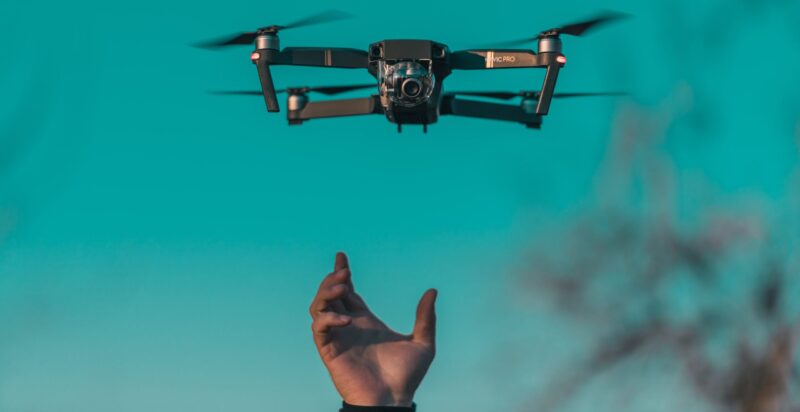“Last-mile” drone deliveries can reduce the externalities caused by automobiles.
As drones have become increasingly common in recreational and military use, tech enthusiasts have yearned for their use in package delivery. After all, who wouldn’t want a pizza flown to their skyscraper balcony?
This article was written by Scott Beyer and originally published by Market Urbanism Report.
But like other buzzword innovations, such as autonomous vehicles or cryptocurrency, the commercial use of delivery drones is not imminent. While the technology is getting there, government approvals are not—which is what usually hinders this sort of thing.
The state of current technology
While “parcel-carrying drones haven’t filled the skies just yet,” writes Supply Chain Dive, they are broadly feasible for last-mile delivery work already. Firms like Flytrex and Amazon’s “Prime Air” subsidiary have conducted successful test runs. Amazon recently received FAA authorization to fly on a test site, and hopes in the future to provide 30-minute maximum delivery times on at least some items. Flytrex specifically focuses on small goods, such as food deliveries. FedEx, Walmart, and Domino’s Pizza are experimenting with drone deliveries.
The air delivery concept is perhaps most promising for sensitive cargo. The University of Maryland deployed a drone to transport an organ, according to Reveel, and some drones designed for this purpose have been used in Africa. In Ghana, a company designed a drone that can make up to 600 trips delivering vaccines. As BBC reports, applications like this could be lifesaving because it would eradicate the long delays common in the medical industry.
“In 2018 there were nearly 114,000 people on waiting lists, with 1.5% of organs not making it to the destination and nearly 4% being delayed by two hours or more,” writes Jane Wakefield.
That is not to say there are not technical issues to be resolved. In 2016, Prime Air delivered a small parcel to a customer in the UK, near its Cambridge testing facility. Amazon celebrated this as a milestone, but the drones were limited by factors including weather, range, time of day, and the size of the parcel being transported. The drones being tested in Blacksburg, VA, by Google’s “Wing” subsidiary began by carrying packages of no more than 3lbs.
But even if the early stages of drone delivery involve carrying small items over short distances, the idea would be transformative. As e-commerce captures a growing share of retail, it attracts increasing blame for adding to congestion and carbon emissions in urban areas. The best way to alleviate this is by finding alternatives to trucks and vans for handling last-mile delivery.
E-bikes could be one path to this, as a pilot project in Seattle showed that e-bike deliveries reduced emissions by 30%. Delivery drones would be an even more advanced step, taking cars, goods, and people off the road. In this sense they provide the same benefits I covered for Catalyst concerning flying cars: by shifting transportation and logistics needs into the sky, they free up space at ground level to create healthier, more livable cities.
Noise, however, is a concern. Ethan Brush writes for Acentech that while drones generally sound similar to the average household appliance, surveys show that people find their noises bothersome. Some research shows there are methods to reduce drone noise, ranging from tweaking the propellers to increasing motor size. If cities were to pass ordinances that limited the allowable decibel level from drones, that would incentivize companies to make quieter ones. Honestly, though, automobiles make lots of noise and people have grown used to it. The same would likely happen following mass adoption of drones—especially if they come with the benefit of getting large, loud delivery trucks off the road.
Regulatory Barriers
According to the Guardian, “government regulations in the UK are generally considered favourable to companies wanting to experiment with autonomous aircraft, but the restrictions still heavily limit what Amazon can test associated with sense-and-avoid technology.” In other words, commercial delivery has not been broadly legalized across the pond.
It is the same in the U.S. The Federal Aviation Administration (FAA) issued a regulatory framework for drones five years ago, but the rules forbade drone delivery services. They have been updated since then, but there are still all kinds of rules and permitting processes that limit where and to what degree it can occur. Add in state and local regulations, writes Jonathan Rupprecht, and it’s “death by a thousand papercuts,” making the service effectively illegal.
Regulations may gradually catch up with drone technology. This could start by loosening FAA regulations, and allowing state and local governments to write them instead, of course with other air traffic and flight path concerns in mind. The goal of that process should be to err on the side of liberalization, recognizing that drone delivery is already happening in other parts of the world, and could be happening here if not for bureaucracy. The benefits would be broad, enabling a new technology that reduces supply chain bottlenecks and improves urban quality of life.





